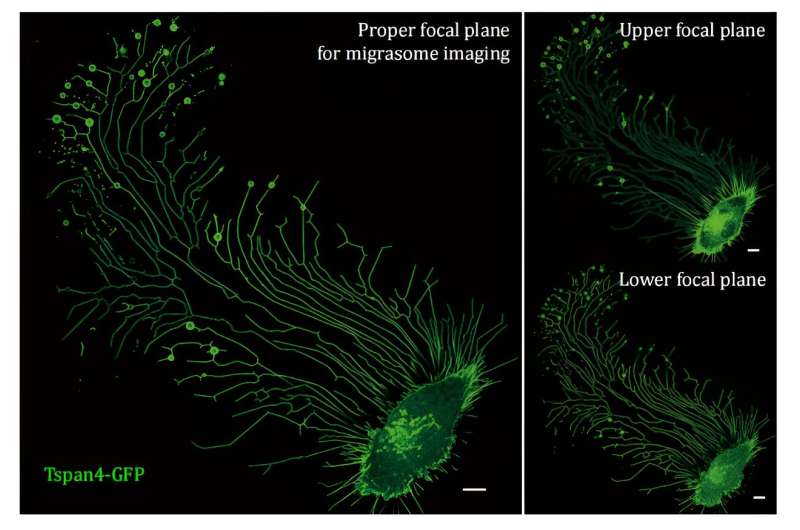This article has been reviewed according to Science X's editorial process and policies. Editors have highlighted the following attributes while ensuring the content's credibility:
fact-checked
proofread
Seeing is believing: Observation of migrasomes

Migrasomes, novel organelles first reported by Professor Li Yu' s team in 2015, are vesicular structures with diameters ranging from 0.5 to 3 micrometers that form on the retraction fibers at the rear of migrating cells. These structures contain various biomolecules such as proteins, nucleic acids, and lipids, along with numerous small vesicles, each approximately 50 nanometers in diameter.
Migrasomes act as conduits for information and material exchange between cells and their microenvironments, participating in essential physiological and pathological processes such as embryonic development, angiogenesis, immune responses, and tumorigenesis.
In recent years, as the mechanisms and biological functions of migrasomes have been elucidated, a methodological framework for studying migrasomes has gradually emerged, laying the foundation for further research advancements.
Migrasomes possess a distinctive morphology and have a lifespan of several hours, making them well-suited for high-quality optical microscopy imaging. Therefore, optical imaging systems have become the most direct and reliable method for detecting and analyzing migrasomes.
Based on published studies and the authors' own research experiences, an article, titled "Seeing is believing: Observation of migrasomes," published in Biophysics Reports outlines a protocol for observing migrasomes using optical microscopy. It also summarizes the information on proteins, dyes, and antibodies that can be used to label migrasomes, and details the steps for constructing an in vitro migrasome reconstitution system.
These protocols provide a basic operational guide for high-quality migrasome observation. However, given the diversity of research objectives and the complexity of migrasomes, the authors recommend that researchers may need to tailor the experimental procedures to their specific needs.
As our understanding of migrasomes deepens and technologies evolve, the methodologies for migrasome imaging are expected to be continuously updated, thereby facilitating further advances in migrasome biology.
More information: Yuwei Huang et al, Seeing is believing: observation of migrasomes, Biophysics Reports (2024). DOI: 10.52601/bpr.2023.230024
Provided by Frontiers Journals





















